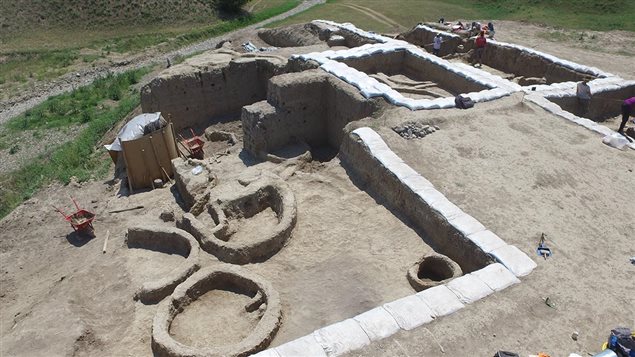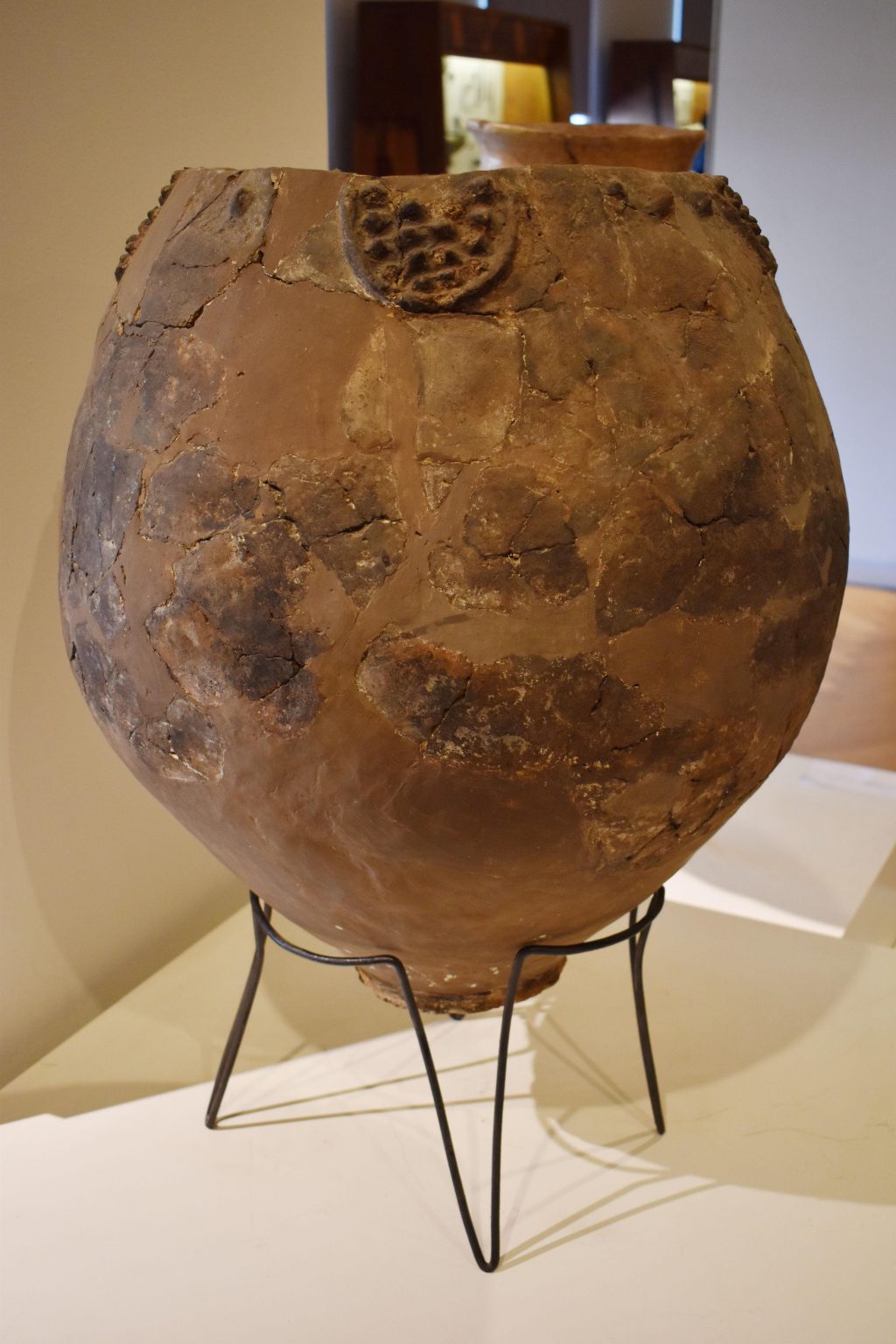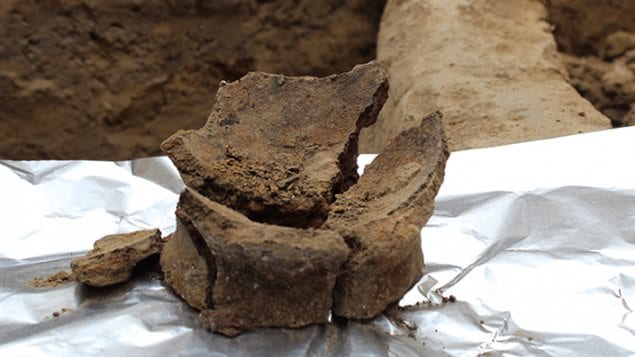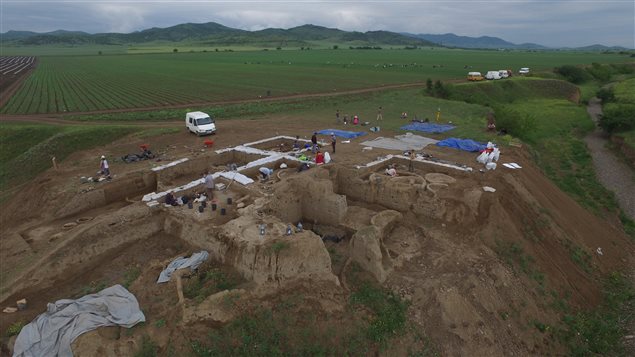A team of University of Toronto archaeologists has contributed to the discovery of the oldest chemical evidence of wine found anywhere in the world, according to a recently published research study.
The discovery at two excavation sites in southeastern Georgia, about 50 kilometres south of capital Tbilisi, by a joint team of researchers from the University of Toronto and the Georgian National Museum dates the origin of winemaking to the Neolithic period around 6000 BC.
That makes it 600 to 1,000 years older than evidence of winemaking found in the Zagros Mountains in northwestern Iran, said Stephen Batiuk, a senior research associate in the Department of Near and Middle Eastern Civilizations and the Archeology Centre at the University of Toronto.
(click to listen to the full interview with Stephen Batiuk)
ListenThe find is also a bit older than the site of the oldest wine production facility found in neighbouring Armenia in 2010, which dates to Late-Chalcolithic/ Early Bronze Age, or 4th-3rd millennium, Batiuk said.
However, unlike the Areni-1 cave site in southeastern Armenia, the sites in Georgia have not yet yielded any signs of wine production facilities, he said. Researchers are hoping to find the remnants of these facilities in nearby foothills as they continue their research, Batiuk said.

Chemical analyses of ancient organic compounds absorbed into pieces of pottery from the two sites near the border with Armenia and Azerbaijan, provide the earliest biomolecular archaeological evidence for grape wine and viniculture from the Near East, at about 6,000–5,800 BC, Batiuk said.
Researchers also believe it is the oldest example of the domestication of a wild-growing Eurasian grapevine solely for the production of wine, Batiuk said.
“Previously we had always assumed that wine production really wasn’t done until the early Bronze Age in the ancient Middle East, this is when people start living in cities, and we thought of it very much as sort of urban elites thing to drink,” Batiuk said.
“But this shows that not only do we have it a lot further back in time but it’s also a totally different social context. This is a village context, this is everyday people actually making this stuff and drinking it.”
Their findings are reported in a research study this week inProceeding of the National Academy of Sciences (PNAS).
“Wine is central to civilization as we know it in the West,” authors of the study wrote in their paper entitled Early Neolithic wine of Georgia in the South Caucasus.
“As a medicine, social lubricant, mind-altering substance, and highly valued commodity, wine became the focus of religious cults, pharmacopoeias, cuisines, economies, and society in the ancient Near East.”
This wine culture subsequently spread around the globe, they said.
Viniculture also illustrates human ingenuity in developing horticultural and winemaking techniques, such as domestication, propagation, selection of desirable traits, wine presses, suitable containers and closures, and so on.

A Neolithic jar, possibly used for storing wine, from the site of Khramis Didi Gora, sits on display at the Georgian National Museum. It holds about 60 litres. Fragments from the bottom of a similar vessel have tested positive for the chemical signatures of wine — the oldest such evidence in the world. (Judyta Olszewski)
The first hints of wine production in Georgia in Neolithic times emerged in the 1970s when Georgian archaeologists exploring the area discovered pottery that had images of grapes and images of people dancing around grapes, he said.
That led Patrick McGovern at the University of Pennsylvania take a few samples from the site of Shulaveris Gora and test them for presence of chemicals produced during winemaking. The results were positive but not definitive, Batiuk said.
“All he had was the pottery and he couldn’t really say whether the positive results he had was the result of wine having been in the vessel or whether it was something in the soil,” Batiuk said. “So there was always that ambiguity.”
The Georgian government funded a project to excavate those sites again in search of a definitive proof, he said.
The University of Toronto team along with their colleagues from the Georgian National Museum excavated two Early Ceramic Neolithic sites (6000-4500 BC) called Gadachrili Gora and Shulaveris Gora, approximately 50 kilometres south of the modern capital of Tbilisi.

The researchers focused on the bases of large storage jars found during excavations hoping that the porous ceramic material would still contain traces of the residue, Batiuk said. And their hunch proved them right.
While a batch of samples from the 2015 excavation period came up empty, samples of pottery and soil from the 2016 dig came back positive for traces of chemicals, such as tartaric acid that are sure signs of winemaking.
The researchers cannot say for sure whether the wine was red or white and were not able to extract any DNA from the jars or find any seeds, Batiuk said.
“In all probability it was both of them mixed together,” Batiuk said. “They probably did not make the distinction at this point.”







For reasons beyond our control, and for an undetermined period of time, our comment section is now closed. However, our social networks remain open to your contributions.